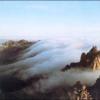-
Content count
34 -
Joined
-
Last visited
About neidan practitioner
-
Rank
Dao Bum
Recent Profile Visitors
-

What are the defining qualities of a Taoist immortal?
neidan practitioner replied to nac's topic in General Discussion
Here is a link to an article that contains descriptions of some the famous Taoist immortals: http://www.qi-journal.com/philosophy.asp?-...rchID=Immortals Best wishes to all, for I am off to sip the pure morning dew on the high majestic mountain peaks ... - np - -

What are the defining qualities of a Taoist immortal?
neidan practitioner replied to nac's topic in General Discussion
From what I understand, and I could well be off on some of this, diifferent branches of Taoism used the term differently. In early Taoism, there were many who were actually trying to create an external physical elixir that would bring physical immortality. Unfortunately many of those doing the experimenting met unfortunate ends, since they ingested poisonous materials. So an immortal to them was someone who was physically immortal. In other sects, an immortal is someone who has spiritually ascended to the Taoist immortal realms. These immortals can apparently appear to people on earth in a bodily form if they wish to do so. In other later Taoists sects that were influenced by Buddhism, from what I understand anyway, an immortal is someone who has not only achieved complete spiritual transformation and ascendance, but also has achieved a oneness with tao or complete enlightenment. Those are just my impressions from reading various Taoist texts. As I said, I may well be off the mark on this. At any rate, a Taoist immortal who has not yet left this physical realm, has been described with characteristics such as the following, (see: http://en.wikipedia.org/wiki/Xian_(Daoist)): "They are immune to heat and cold, untouched by the elements, and can fly, mounting upward with a fluttering motion. They dwell apart from the chaotic world of man, subsist on air and dew, are not anxious like ordinary people, and have the smooth skin and innocent faces of children. The transcendents live an effortless existence that is best described as spontaneous. They recall the ancient Indian ascetics and holy men known as ṛṣi who possessed similar traits" Don't forget to say hi to them when they bound past you effortlessly as you are climbing up the mountain. - np - -

Zhan Zhuang -- What is it? Recommended books?
neidan practitioner replied to DaoChild's topic in General Discussion
Here is more info on zhan zhuang from the dachengquan crowd's perspective. One should keep in mind that zhan zhuang was common to all the internal martial arts though, so it has a broad tradition. http://www.da-cheng-chuan.org/tga1.htm - np - -

Zhan Zhuang -- What is it? Recommended books?
neidan practitioner replied to DaoChild's topic in General Discussion
I was told that zhan zhuang literally means something like standing stance. In other words, it is standing practice, or standing meditation. It can be used to help calm the mind, strengthen the connecting tissue in the body, and in my experience is also a very effective form of qigong (it builds energy fairly quickly). You can find some more information here: http://www.yiquan.org.uk/art-zz.html The most basic standing stance is the wuji standing stance, which is done as follows, (you will likely come across variations of this): Stand with the feet parallel, about shoulder width apart, with the toes facing straight forward. The knees are slightly bent, i.e., do not lock the knees, but let them extend forward a bit over the feet. The pelvis is tucked in a bit to help naturally straighten the lower spine. You are not pushing the pelvis all the way forward, that will feel awkward and unnatural. For me it feels like I move the lower part of the spine about an inch forward or so from the fully backward extended position of the pelvis. This feels relaxed and natural. The back is kept naturally straight, with the chest sunken, i.e., do not lift the chest at all, just stand vertically with the chest and shoulders completely relaxed. In the wuji stance, the arms can just hang down naturally by your sides, or you can rest the palms lightly on the sides of the legs. You should also lower the chin slightly which straightens the back of the neck. You can close the eyes, or just close them a bit, and gaze forward. The breathing should be slow, deep, soft, and natural. A variation of this is to hold the arms in a semi-circle in front of the body, with palms facing inward, and with the shoulders and elbows dropped. This can be done at the height of the navel, or at chest height, and is known as big tree, or tree standing, and maybe known by some other names as well. There are many other variations of standing stances as well. What I described are the basic stances as was taught to me, but although they may be basic stances, they are a very effective form of qigong in my experience. - np - [Edit: Fixed a couple grammatical errors.] -

Beginning QiGong - Best books for exercises?
neidan practitioner replied to DaoChild's topic in General Discussion
Standing meditation has traditionally been used to help build internal strength and energy in the internal martial arts. The book that others have mentioned "The Way of Energy", by Lam Kam Chuen looks like it might be what you are looking for then. The internal martial art dachengquan mainly focuses on various standing meditation forms to build internal strength and energy, and greatly down plays practicing forms, although it seems more recent practitioners of yiquan (new name used by some for dachengquan) are adding all kinds of shadow boxing like movements to their practice as well. Since you already practice bagua, you are already doing a moving form of qigong, so standing meditation, also known as zhan zhuang, big tree, and post standing, and by other names, is probably what you are looking for. Many people don't practice it much these days, maybe for just five minutes or so at a time, so they may not realize the benefits that can be had from longer and regular practice. Once you get up to standing twenty or thirty minutes of practice a day or more, you should quickly start to see the benefits. It can be a bit tough to do at first until you get used to it, but it is well worth it in my experience. It has been said that standing meditation is the real secret of building internal power in the internal martial arts, and was how Yang Cheng Fu and other famous internal martial artists reached such a high level. This was said by Cai Song Fang, who is a well respected tai chi master in China and who specializes in mainly doing wuji standing meditation for his training, (not the same as 'wuji qigong', a moving qigong form), which I believe Cai Song Fang learned from Ye Dami, who learned it directly from Yang Cheng Fu. - np - -

Attention! Letter From David Verdesi Regarding Wang Liping
neidan practitioner replied to r.w.smith's topic in General Discussion
-
There is a saying that goes like this, "In Taoism there are no heretics, just different sects". - np -
-

Attention! Letter From David Verdesi Regarding Wang Liping
neidan practitioner replied to r.w.smith's topic in General Discussion
Or one can just go ahead and practice simple standing or sitting meditation for free, and make just as good, if not better progress. Just simply quieting the mind and keeping the back naturally straight and relaxed while sitting or standing is all there really is to it. Do we really need to pay a teacher to learn that? IMO. this is the real secret of qigong and cultivation that the teachers for profit don't want people to know, or which the teachers for profit don't know themselves. For the beginner, simple standing meditation is probably the best IMO, although maybe not easy to do at first, and in my experience is much more effective than other types of moving qigong exercises I have tried. BTW, I am not putting down various moving qigong exercises or the internal martial arts in any way, as the body needs exercise, and these types of moving exercises are very good for the body and health in general, in my experience. I love practicing tai chi. Yes, one should probably have a teacher if they are going to learn an internal martial art or the more complicated forms of moving qigong, as the subtleties of these arts may be hard to grasp without the guidance of a teacher; and although instructional videos are getting very good these days, a video is always limited in scope due to time constraints and variations of how things should be done at different stages in the practice. That is the beauty of practicing simple standing or sitting meditation. No complicated procedures to learn, and it gets right to the point of cultivation. Maybe that is just too simple for our modern minds which expect that the simpler something is, or the less it costs, the less value it must be, or something like that anyway. - np - -

Attention! Letter From David Verdesi Regarding Wang Liping
neidan practitioner replied to r.w.smith's topic in General Discussion
I find it hard to understand why anyone would even consider paying that much money for some basic qigong training. If someone just diligentlly practices simple standing meditation or sitting meditation, for even just 20 or 30 minutes a day, over time they should be able to make good progress. I guess the hype and allusions to great secrets being revealed and great powers appeals more to the ego. Also, it may also be that many people just do not know any better. It's sad how unscrupulous some people can be, but such is the way of the world. - np - -
Ok. Where ever I have looked, it is nowhere to be found. Strangely enough, the same applies to the 'I' who is doing the looking. Maybe I am just really bad at hide and seek. [Edit - Further comments added later:] More seriously though, before one can ask where something is, first you should probably establish if that something exists, and you also would want to establish what frame of reference you are using as a basis to locate that something in. However, before you can do that, you also need to be clear on what you mean by something 'existing'. Is one referring to 'existence' in a relative sense, as in relative to some given frame of reference, or are we talking about existence in some sort of absolute sense that is independent of any arbitrary frame of reference? If one is talking about a relative frame of reference, then one would need to first clearly define exactly what that frame of reference is. If one decides they are talking about existence in an absolute sense, best of luck even getting started with establishing an approach. However, before starting into all of the above, one may first want to consider the question, why should one care? What potential benefit is there to expend the time and energy with the above approach? Is it even a meaningful pursuit? These may be just as difficult questions to answer as the previous ones, if not more difficult, and may open up a whole different line of questioning. So, why should one care if the mind exists or where it might be, etc? If one answers, well, it might give you a better understanding of who and what you are. Then I might ask again, why should I care who or what I am? Do I even exist? What does it mean for me to exist? What is existence anyway? You may well end up back where you started. Maybe before asking any of these questions, one might first ask, can thinking ever get me anywhere with any of these questions, or is that just a recipe for running around in endless circles? Couild there be some other way? I'm getting weary now, so I think 'I' will stop now. What is now? - np -
-

A Few Questions for Mak Tin Si
neidan practitioner replied to neidan practitioner's topic in General Discussion
Ok, alas, it was a really long time ago, so I guess it's hard to say for sure now. Also, yes, one's definition of shamanism is important too. One could use the term loosely, or try to adhere to some formal definition. Some types of shamanism deal with the 'lower' spiritual realms, inviting animal spirits to enter the body to try to gain special powers or abilities, etc., and I could see why a religion might try to distance itself from such things, while other forms of shamanism seem to be more oriented to 'higher' spiritual aims and practices. In the end I guess it doesn't really matter whether it came directly from forms of shamanism and/or various folk religion practices, or from informal spiritual practices that later became more formalized. Was just curious. If I work really hard at my cultivation, maybe someday I can find out for myself. - np - [Edit: Fixed munged post] -

A Few Questions for Mak Tin Si
neidan practitioner replied to neidan practitioner's topic in General Discussion
Ok, what makes you think that it came from Siberia? China had its own shamanism in southern China, which is also where Taoism seems to have first appeared as well. Also, Siberia and southern China are not very close together, and we are talking 2500 years ago and earlier, as well. One would think that there probably wasn't a lot of long distance travel going on back then. -
Questions for Mak Tin Si: 1) Mak Tin Si, on your website it states the following: "Taoism have been in China for more than 5000 years now." Lao Tzu was thought to have lived somewhere around the time between 600 to 400 BC, during the Eastern Chou dynasty, I believe. According to what I have read, Taoism was not not yet a formal religion at this time period, and Taoism did not become a formal religion until about 142 AD, when Chang Tao-Ling (Zhang Daoling) created the 'Five Pecks of Rice' Taoist sect, also referred to as the 'Celestial Masters' sect. It seems that the practices of this sect are similar to what you practice, honoring Deities and Gods, using Fu for protection and healing, and using ceremonies to ward off evil spirits and such. Prior to this time period, there appears to be no records of a formal Taoist religion, but there are records of the shamanic practices of the 'Wu', or Chinese shamanism, as it has been called. What form of Taoism are you referring to that existed before the Five Pecks of Rice/Celestial Masters sect, and which goes back 5000 years? Are you referring to the practices of the Wu? 2) You also mention on your website: "After the store is opened, an immortal went into the temple one day and introduced both Tin-Si to learn under a hidden immortal who is training in the deep mountain in China. Both Tin-Si were attuned from the immortal and trained under this immortal via the Altar. Mak Tin-Si got his poor vision and hearing improved, while Lau Tin-Si improved her memory and brain power. This immortal then passed on a very powerful Taoism energy to both Tin-Si. From then on, both Tin-Si inherited this old branch of Taoism." Does this old branch of Taoism referred to here have a name? If so, what branch of Taoism is it? I am trying to place all of this in the context of what is known about the history of Taoism. 3) What is 'Thatch Mount' Taoism, and when did this branch of Taoism come into existence? Thanks, np
-

Newbie confused by "see and not see"
neidan practitioner replied to zinedine's topic in General Discussion
Hi zinedine, Really, only your teacher knows what they really intend by saying that. They may mean that one should try to comprehend outside of normal thinking processes and perception, or they may just think that saying "see and don't see" sounds like a cool Taoist type thing to say and may impress the students, and may make the students think the teacher has some deep mystical understanding that the students do not have. Something to consider here, this is an open internet forum, and pretty much anyone can post here. There is no guarantee that anyone posting here possesses any deeper an understanding of 'Taoism' than you you do. 'Taoism' is a broad term that includes many different mystical and religious practices and traditions, and which has also been evolving over time, and it is not one homogenous system or clear cut set of practices. One should take all statements made here, including my own, with a healthy dose of salt, but you likely already realize that. In my view, those who intellectualize about Taoism, or attempt to explain Taoist concepts and practices strictly on an intellectual level, and who insist that if something can't be explained in clear cut, linear, and strictly intellectual terms, it must be nonsense, have clearly missed the boat. Talk is just talk. I am just talking now. Talk, but do not talk. (Just kidding! ). For a good general overview of the history and various practices and sects of Taoism, see Eva Wong's book 'The Shambhala Guide to Taoism'. Read, but do not read, Grasshopper. - np - -
Ok, Awake. I just couldn't see how someone could be in such a state of panic about just getting a sore back, especially when it had already been explained to you some things you could do to help alleviate any bad effects you might be having. For example, trying not to focus too much on any problematic things, going for long walks, keeping yourself calm as best you can, etc. I also couldn't see how if you were really having a problem that was making you panic this much, that you would still be calmly making posts in other threads here at the same time you were posting panic posts here. It doesn't seem to add up, that someone would be so panicked even after people had already explained that if you do your best to stay calm and don't focus on it too much, and do things like taking long walks, ill effects will start to dissipate. On the other hand, if you had been doing some stretching exercises or other physical activity that you don't normally do, then it might be that you just stressed something in your back and that might indicate just a physical problem. However, you also mentioned no specific details at all in this thread really about whether that was the case or not, so how would you expect people would be able to assess what you might be experiencing? It doesn't sound like what a person would do if they were sincerely looking for assistance. If you get this freaked out when you feel any unusual sensations or ill effects that might be from meditation, why are you doing meditation? To put this more in perspective for you. When I was younger I had some spontaneous occurences of this sort happen to me, even though I wasn't practicing any meditation or yoga or anything like that, not did I know anything about chi kung, meditation, or yoga and such at the time. So, for me, I had no framework at all to try to sort out what I might be experiencing. At any rate, I did go for a 2 or three week period where besides the strong energetic type of feelings (sometimes intense) that I was experiencing, I also was getting bad headaches and a stiff neck, and it felt like my sinuses were full of pressure, although I didn't have a cold or flu or a runny nose and such. I was taking that nasal spray stuff and it wasn't helping at all. Still, I wasn't at all panicked or overly concerned because I kind of gathered, based on the strong energetic things that were going on as well that there was something unusual going on, and I kind of suspected it might be a 'yoga thing' or something along those lines, so I started doing some research at the library and reading various books on the subject. After about 2 or 3 weeks, the strong pressure in my sinuses and the headaches passed, but I was doing lots of walking which probably helped as well. I have had other ill effects somtimes as well, but for me all passed in due time. Trying not to focus too much on any problems that arise, and taking long walks may help you out here as well. If I had woken up with pain in my back, I might be concerned as well, but I no doubt would have just observed over several days to try to determine if the problem was just an effect of meditation, or an actual physical problem of some sort, and to see if the problem started to ease on its own. It doesn't hurt to go see a doctor of course, but you may end up having to go for a bunch of x-rays and not fun tests of various types if the doctors don't see a physical problem when they examone you. On the other hand, if you just did something that stressed out your back, the doctor or chiropractor may be able to give some relief. Without you having provided more details here, it's really hard to say. At any rate, going to a doctor sounds like a good thing in your situation if you are sincerely worried about this. If the doctors don't find any physical problems, and you can manage it, maybe try going for long walks and doing some gentle upper body rotation exercises, if it doesn't hurt too much, to see if that helps with your situation at all. Also, try not to focus on any problems too much. If it is due to whatever meditation and other stuff you were doing, it is best not to focus on any problems areas to much, so as not to aggravate any problems. Also, if the problem you reported is due to a bit of energy build up in the spine, this is not a 'blockage' in the sense of a 'problem' area, but is something that one might experience when energy is forced or directed into the spine with intention, instead of allowing things to progress and 'open' naturally, as I described in the other thread. This is the types of ill effects that may occur that I was alluding to when I said it is not a good idea to use intention to try to lead or direct energy (at least at beginning stages). At any rate, if this is due to this, and not a physical problem with your back, it should pass after a while, if yo don't keep focusing on it too much. - np -





